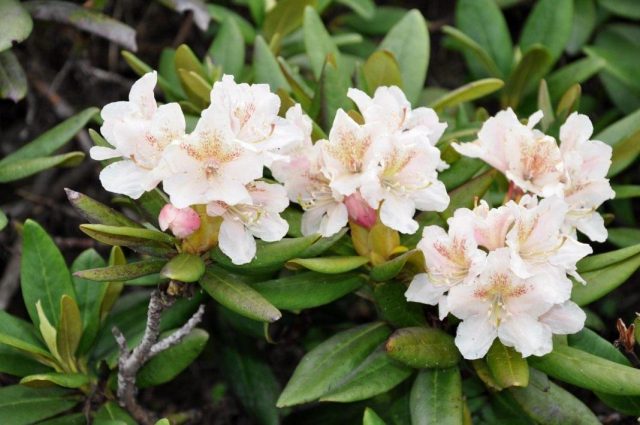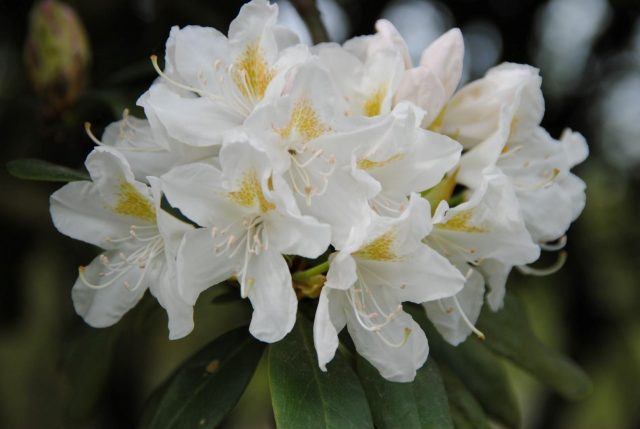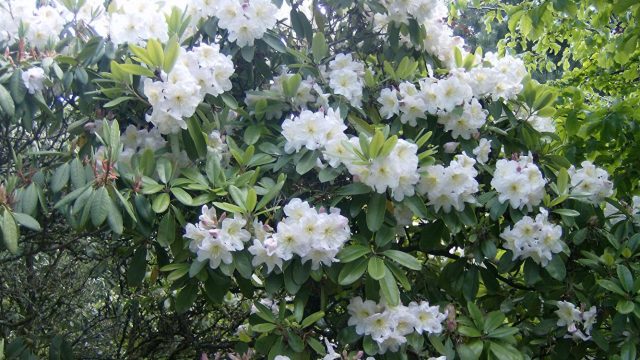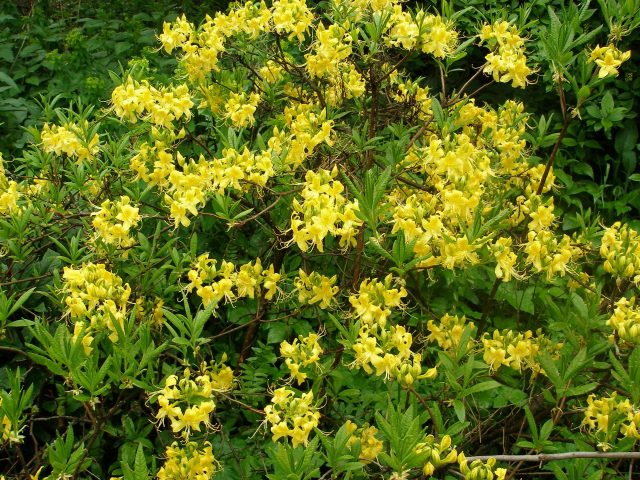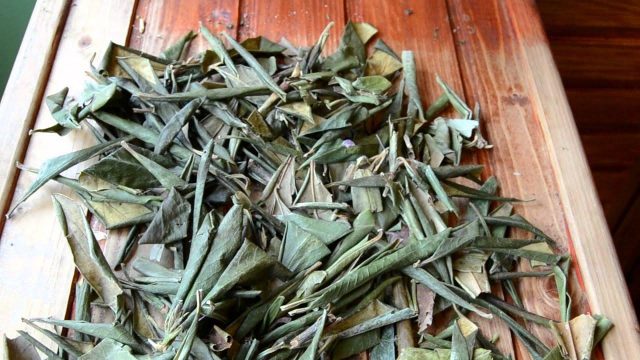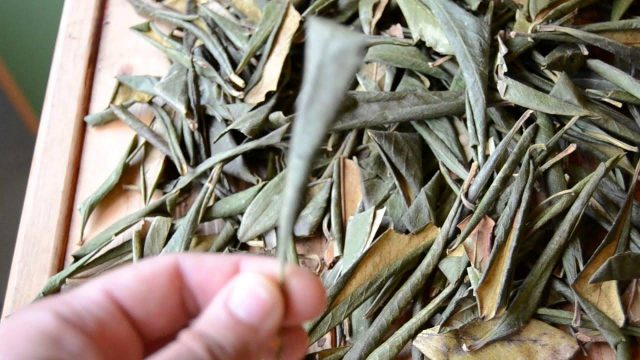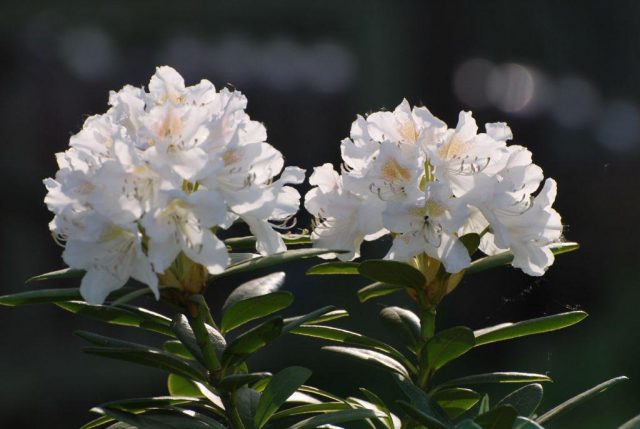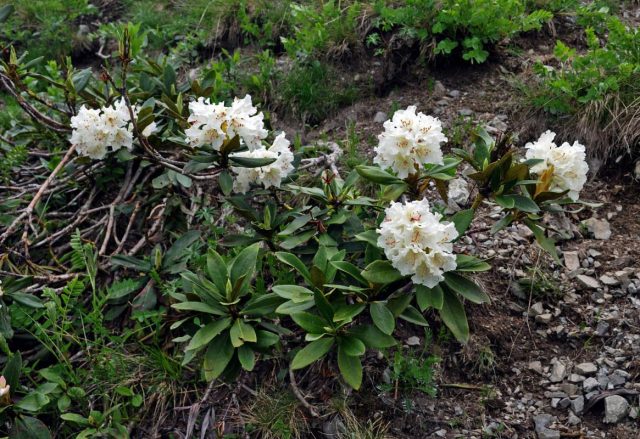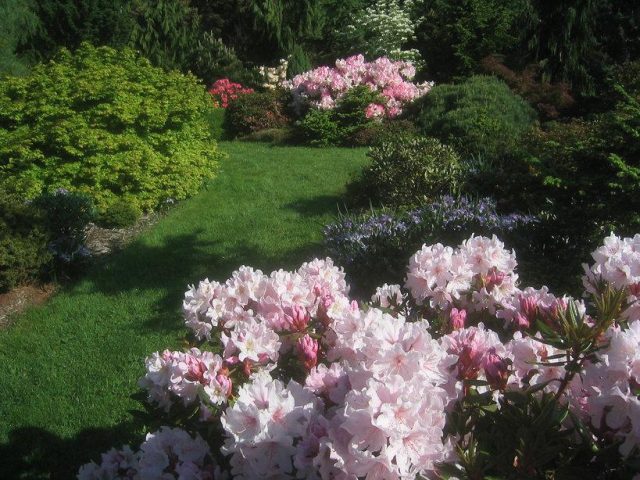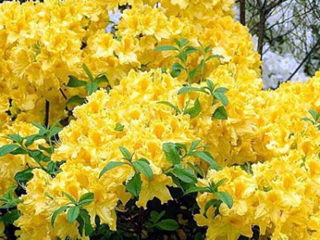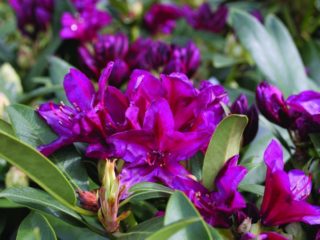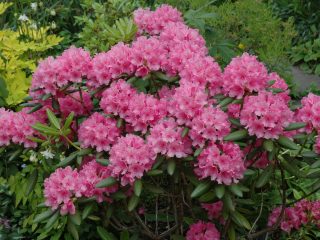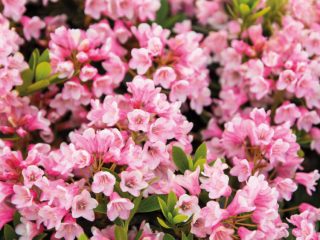Content
- 1 Description of the Caucasian rhododendron
- 2 Varieties of Caucasian rhododendron
- 3 Medicinal properties of Caucasian rhododendron
- 4 Methods for harvesting Caucasian rhododendron
- 5 How to brew Caucasian rhododendron
- 6 Application of Caucasian rhododendron
- 7 Contraindications to Caucasian rhododendron
- 8 Planting and caring for Caucasian rhododendron
- 9 With what to plant a Caucasian rhododendron in a flower bed
- 10 When rhododendron blooms in the Caucasus
- 11 Conclusion
Caucasian rhododendron is a beautiful evergreen shrub that has beneficial properties. In the middle lane, the plant is only gaining popularity. Successful cultivation depends on the quality of the soil, planting site and care.
Description of the Caucasian rhododendron
Caucasian rhododendron is an evergreen plant of the Heather family of the genus Rhododendron. It occurs naturally in the Lesser and Greater Caucasus. Forms extensive thickets next to snow-covered fields. It inhabits at an altitude of 1600 to 3000 above sea level.
It has been grown in culture since the beginning of the 19th century. Well adapted to the conditions of the middle lane. It is planted on the territory of European Russia, including in the North-West region. Many species of Caucasian rhododendron are listed in the Red Book.
Shrub with a usual height of 50-60 cm sometimes reaches 1 - 2 m. The branches are recumbent, with dark bark. Leaves are oval, oblong, leathery, pointed at the ends. Above, the leaf plate is dark green in color, below it is covered with short red hairs. The length of the leaves is up to 10 cm.
The flowers are funnel-shaped and resemble bells, up to 4 cm in size, whitish to pink in color, light, pleasant aroma. Flowers are collected in umbellate inflorescences. Greenish spots are present inside. Pedicels and calyx are covered with red hairs. After flowering, a box up to 3 cm long is formed.
Caucasian rhododendron in the photo:
Varieties of Caucasian rhododendron
Depending on the color of the flowers, there are several varieties of rhododendron:
- Cunninghams White. The variety was bred at the end of the 19th century. This is a winter-hardy and unpretentious plant up to 2 m high. The crown diameter is up to 1.5 m. The culture is not demanding on the acidity of the soil, does not suffer from urban pollution. The flowers are white, with lilac specks on the upper petal. Flowering occurs in early June;
- Riga white. The plant is up to 70 cm high. In the spring it produces snow-white flowers, which is why the variety got its name. Grows in parks and the botanical garden of Riga;
- Straw yellow. Shrub up to 1.5 m high and up to 3 m wide. Occurs in mountainous areas. Bell-shaped flowers with a diameter of 4 - 6 cm. Flowers of yellow color, collected in inflorescences of 8 - 12 pcs .;
- Rosea Alba. A decorative form that is distinguished by early flowering. Produces beautiful pinkish-white flowers.
Medicinal properties of Caucasian rhododendron
The leaves of the Caucasian rhododendron have healing properties. They contain acids, essential oils, tannins, rhododendrin, vitamin C, tannins. In the roots of the plant there are substances that burn fats.
Treatment with Caucasian rhododendron is carried out under the supervision of a physician. The specialist will conduct an examination and prescribe the required dose. At high concentrations, the intake leads to intoxication and worsens the state of health.
The action on the body of the Caucasian rhododendron is as follows:
- increases perspiration, removes toxins and other harmful substances;
- normalizes body temperature, relieves fever in case of colds;
- removes cholesterol from the blood;
- calms the nervous system;
- burns fat and helps to lose weight;
- the diuretic effect helps to relieve swelling;
- prevents the growth of harmful bacteria;
- enhances blood flow and contraction of the heart muscle;
- reduces venous pressure;
- benefits in rheumatism, colitis, epilepsy.
From the Caucasian varieties, effective remedies are obtained against poisoning with mercury and other poisonous substances. The drugs relieve headaches and restore mucous membranes. Aqueous extracts are used for rinsing for diseases of the oral cavity.
An infusion of leaves is used for infertility and erosion of the uterus in women. The medicinal properties of Caucasian rhododendron for men are to relieve inflammation in the prostate gland.
Methods for harvesting Caucasian rhododendron
In order for the plants to bring maximum benefit to the body, it is important to properly prepare the raw materials. Leaves are cut during the flowering period from shrubs over 2 years old. For this, use sharp scissors or pruning shears. For work, choose the morning or evening period.
The collected leaves are dried outdoors or indoors. Be sure to choose a place in the shade, protected from direct sunlight. The collected raw materials are laid out on paper or a clean cloth. The leaves are kept until completely dry. The mass is stirred periodically.
When the raw material becomes more brittle and fragile, it is removed for storage. Dried leaves are kept at room temperature, protected from sunlight and high humidity. It is best to place the mass in a container and close the lid. The storage period is up to 2 years.
How to brew Caucasian rhododendron
Caucasian rhododendron tea relieves sore throat with colds. The drink strengthens the immune system, calms the nervous system, relieves insomnia. It is also used for gargling.
The procedure for making tea from the Caucasian rhododendron:
- Pour boiling water over the teapot.
- Place 1 tbsp on the bottom. l. dried leaves.
- Add 1 cup boiling water.
- Close the teapot with a lid and leave for 15 minutes.
- Strain the infusion.
Prepared tea is taken daily for 1/3 cup. Add lemon, honey or sugar to taste. The plant goes well with other herbs: oregano, thyme, mint, sweet clover, lungwort, sage, ivan tea. The course of taking such tea is 2 - 4 weeks, after which they take a break for 2 weeks.
Application of Caucasian rhododendron
In order for the Caucasian rhododendron to have a therapeutic effect, it is important to choose the right method of application. Most often, a decoction or alcohol tincture is prepared from the plant.
A decoction of the leaves normalizes the nervous system, relieves symptoms in diseases of bones and connective tissue. The course of admission is at least a month.
The procedure for preparing the broth:
- 5 g of dried leaves pour 1 liter of water.
- Bring the liquid to a boil for 5 to 8 minutes.
- Remove the container from the stove and leave the broth to infuse for 30 minutes.
The tool is taken three times a day, 50 ml. The broth is stored in the refrigerator. It is best to prepare a fresh product at least once a week.
Another way to use Caucasian rhododendron is tincture. They prepare it on their own or purchase a ready-made product in a pharmacy. The course of admission is from one to two months, after which they take a break for a month. The remedy lowers blood pressure and normalizes sleep.
Instructions for preparing the tincture:
- Measure 20 g of dry leaves and pour 200 ml of vodka into them.
- The mass is well mixed and kept in a place protected from sunlight.
- After 2 weeks, the agent is filtered.
- The resulting tincture is stored in a cool dark place.
Contraindications to Caucasian rhododendron
The Caucasian rhododendron herb has a number of contraindications:
- pregnancy and breastfeeding;
- kidney disease;
- individual intolerance;
- low pressure;
- age up to 10 years;
- kidney disease;
- tissue necrosis.
Planting and caring for Caucasian rhododendron
Mountain Caucasian rhododendron develops well in the middle zone. The plant prefers shady areas with moist soil. The shrub does not freeze at temperatures down to -29 ° C. The optimal substrate is leafy soil, peat and coniferous litter in a ratio of 3: 2: 1.
Rhododendron is planted in the spring. It is better to prepare the planting hole in the fall so that the soil shrinks. The plant is removed at least 70 cm from other shrubs and trees.
Planting procedure:
- A hole is dug on the site with a width of 70 cm and a depth of 50 cm.
- Sand and broken brick are placed at the bottom with a layer of 20 cm.
- The pit is filled with a substrate to form a small hill.
- A seedling is placed on top. Its roots are covered with soil.
- The rhododendron is watered abundantly.
- A mulching layer up to 8 cm thick is poured into the trunk circle.
In the future, the rhododendron is provided with good care: watering, feeding, weeding weeds... The plant requires abundant watering. Water is applied at the root, at least 2 - 3 times a week. The moisture rate per plant is up to 10 liters.
Rhododendron is fertilized 2-3 times per season. In the spring, rotted manure is introduced under the bush. Before and after flowering, any fertilizer containing phosphorus and potassium is used. Avoid formulations containing lime and chlorine.
For the winter, young plants of the Caucasian rhododendron are covered with spruce branches. Just also agrofibre and other nonwovens. They are attached to a wooden frame. Well protects from frost podzimny watering and soil mulching with humus. At the end of March, the shelter is removed, but spruce branches are left. This will help prevent sunburn on the leaves.
With what to plant a Caucasian rhododendron in a flower bed
The Caucasian rhododendron prefers damp, dark places. The plant is used in group and single plantings. Choose areas with wet soil. An excellent option is planting next to water bodies and streams, under ornamental shrubs, spruces, pines and other trees. The plant will help fill the north side of the lot next to house walls and fences.
Rhododendrons planted in groups look spectacular. They are placed along lawns, paths and alleys. When planting, take into account the compatibility of colors. It is best to combine varieties with white, pink and purple inflorescences.
Beautiful tapeworm compositions are obtained from rhododendrons. The tall shrub stands out against the backdrop of the green lawn. The plant is also used to create rocky hills and hedges. Its combination with other alpine herbs is very effective.
When rhododendron blooms in the Caucasus
Rhododendrons in the Caucasus Mountains bloom from late spring to early summer. The first buds appear in plants over 12 years old. In a culture under natural conditions, flowering lasts from mid-May to the first decade of July. Sometimes the shrub re-releases inflorescences in mid-October. Re-flowering is not annual.
Conclusion
Caucasian rhododendron is a beautiful and useful plant. According to the type of flowers, there are several varieties of this shrub. In medicine, its beneficial properties are used. To grow rhododendron, it is important to prepare a place on the site and provide the plant with further care.
